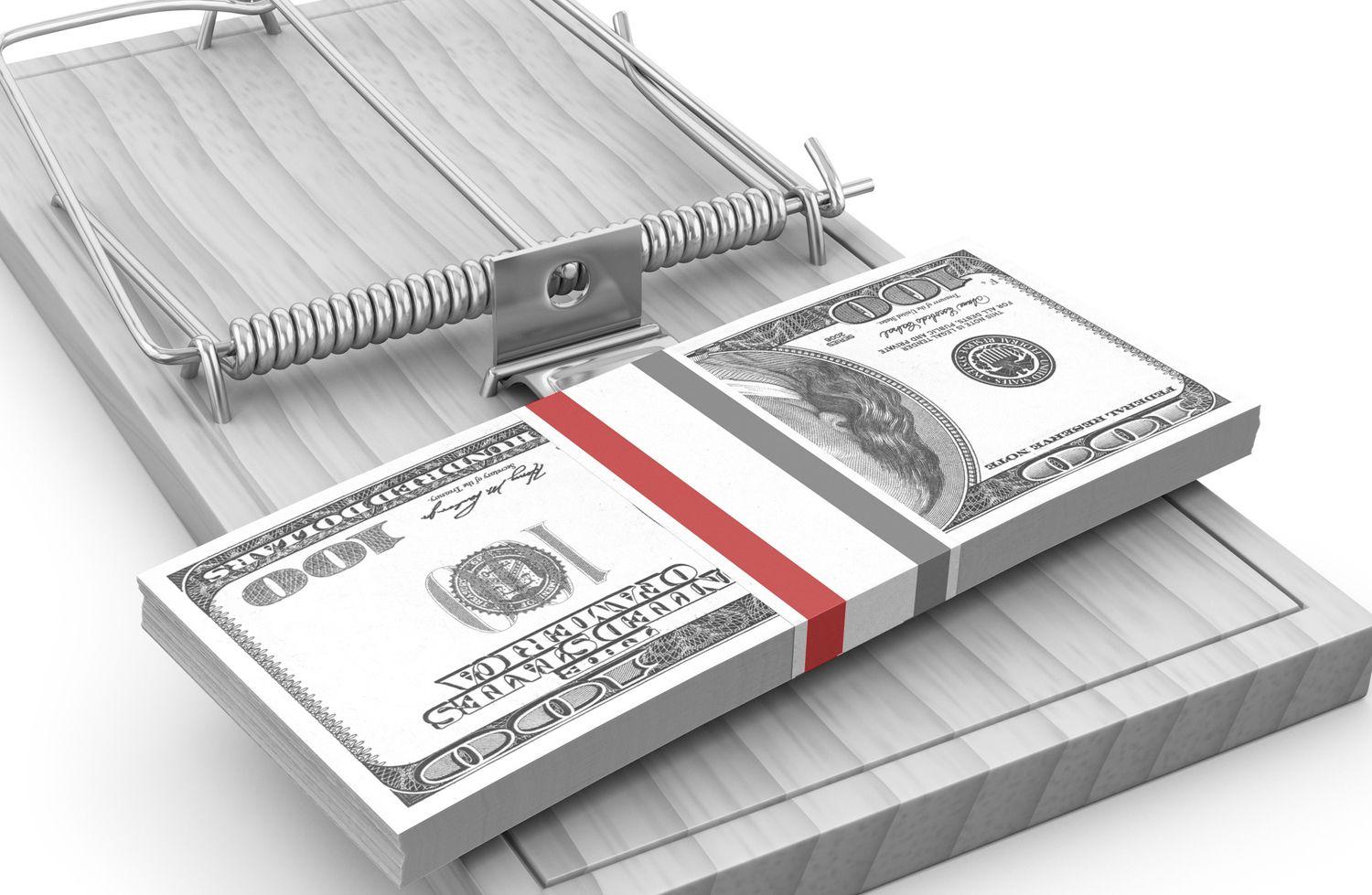It’s a Trap, a Liquidity Trap
 Jason GlennMarch 23, 2023
Jason GlennMarch 23, 2023
In our last discussion on money creation, global dollar supply, and debt market anomalies (Inversion of the Money Snatchers), we touched on bubbles and liquidity crises. The last couple weeks, it seems appropriate to discuss the monetary system and liquidity.
For brevity, complex relationships have been simplified to make four points:
1. Big government spending bills provide questionable economic stimulus but ultimately put a drag on the velocity of money.
2. Banks, sensing the expansion party is ending, will begin to tighten lending practices. Once fear becomes manifest in a couple of failed banks, more prudent banks will adjust their risk profile and amass liquid assets.
3. When the FED purchases and holds treasuries during QE, they trap liquid collateral.
4. When consumers and businesses lose their appetite to take on debt, creation of money from those two avenues wanes.
"It’s a trap." -Admiral Ackbar
Who creates liquidity/money/treasuries? Lenders and borrowers agree to create loans which become newly created money. The lender side is primarily banks. Borrowers consist of individuals, businesses, and governments. If any party becomes risk adverse, monetary expansion slows and slows GDP growth. Fear is the enemy of economic expansion; the show must go on with confidence backed by the USG. Every word from banking leaders and their media instills confidence in the system.
Anyone who routinely does business with the government will understand the velocity of government executed projects is impaired, trapping the potential of liquidity to flow freely in the economic cycle. Once the government’s portion of the GDP is sufficiently large, the virtuous cycle of economic progress and free flowing cash grinds to a crippling pace (Figure 1).
One key feature of liquidity is stable value. The world’s largest market providing ample liquidity and relatively stable prices is the US Treasury (UST) market approximating $22T in market value (Figure 1). Treasuries also yield a return to the owner, making them preferred over cash. When using UST as collateral, banks are allowed to account for treasuries at held-to-maturity (HTM) values not reflecting current market value, making them even more attractive as stable collateral. In the last year, UST values have taken a big hit due to higher interest rates. Allocate investments and loans with over 100:1 leverage, followed by a forced UST liquidation at a loss and you are insolvent.
"When you combine ignorance and leverage, you get some pretty interesting results." -Warren Buffet.
What is the leverage limit for a US bank? Effective March 26, 2020 – none. Absorbing loan defaults and fulfilling depositor withdrawals become the practical leverage limit, hence, “stress tests”. In recent months, higher interest rates, to quell demand, tanked UST value, resulting in banks’ desire for more liquidity to cover risk. This further removes potential funds from productive uses in the economy.
While a few bank failures in the absence of fractional reserve requirements seem irresponsible, it was necessary to make available additional money. The fixed reserve feature of banking regulations has not been reinstituted, most notably during the ongoing “inflation” fight. The FED remains loose on reserve requirements and tight on interest rates simultaneously…keep reading.
Trust no one. -Informant’s last words from X-files
Milton Friedman said, “Inflation is always and everywhere a monetary phenomenon in the sense that it is and can be produced only by a more rapid increase in the quantity of money than in output.” Paraphrasing, when there is too much money relative to productive activity, expect inflation. But is increasing CPI always inflation? In the context of a global supply disruption (productivity slump), a decreasing money supply (deflationary pressure) might still coincide with higher CPI due to supply side shortages. Banks don’t fail when there is too much money, so do we have Nobel Prize winner Milton Friedman type inflation? No, and the FED Chair said as much at the beginning of the “inflation” narrative but became politically pressured to do something about the CPI. Subsequently, higher interest rates have been very slow to produce more oil and eggs. Maybe more drilling and farming (productive activity) would do more to arrest CPI than an upcharge for the cost of capital. Ultimately, if we are experiencing real inflation, it is not from too much money but too little productivity. It’s a trap.
The inverse of defeating inflation was the FED’s attempt to achieve inflation of roughly 2%. Before the GFC, they increased rates right up until the banks failed…wow. Afterward, the FED kept rates near zero and loaded their balance sheet with assets. Until the pandemic supply shortages, the FED failed to achieve their inflation target using ZIRP and QE (for a decade!!!). Why? Well probably because Bear Stearns was fresh in bankers’ minds and the FED introduced more banking control measures in addition to existing reserve requirements. So, while loosening they tightened. With this recent decade of waning inflation, ask yourself if interest rates or supply chains are more in control of CPI.
However, direct stimulus may have worked quickly to increase demand and create inflation prior to the GFC. Entering a recession in April 2008, the USG orchestrated a stimulus payment of $600 per qualifying taxpayer, and the spike in inflation was evident a couple months later, prior to deflation by EOY 2008. USG stimulus payments during the pandemic probably applied some temporary inflationary pressure, further masking the building liquidity trap.
Reckless spending and loose lending (and occasional bank rescue) may be necessary for the monetary expansion to continue. The banking crisis we are seeing unfold is largely from the banking industry tightening, in conjunction with the FED tightening, and a waning consumer. The alternative may be overly conservative lending leading to a severe recession.
The last 40 years have shown a similar sequence of rate hikes, inversion, rate cuts, stock market bottom and stock market recovery. Figure 2.
Disclaimer: The content and materials available on this site are not intended to serve as financial, investment, trading, or any other form of advice or recommendation from Trading Terminal.




